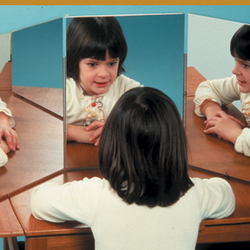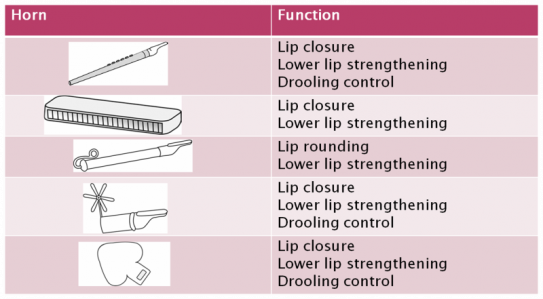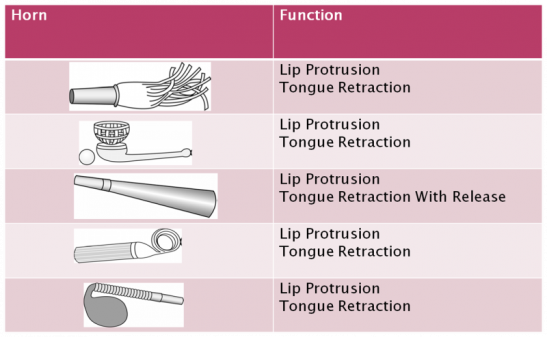Practicing the "AT REST" position for the lips, jaw, and tongue:
- "At Rest" means when the tongue, lips, and jaw are not in movement in the process of talking and eating.
- The lips should be held gently together without pressure.
- The jaw will be slightly relaxed, that is, the teeth will be separated slightly-- Not in Contact.
- The tongue will be pointed toward or
- touching the "T" target (explained below).
- The whole tongue will be slightly retracted or pulled BACK in the mouth.
Determining The "T" Target
- The "T" target is the spot on the gum ridge just back of the upper front teeth where the tongue touches to produce the sound.
- The tongue tip should be touching this target spot at all times when the tongue is in the rest position, that is when the tongue is not moving in the process of speaking, eating, or swallowing.
The Mirror Technique
- The patient is to mimic the movements the instructor makes while looking in the mirror.
- These movements include making silly faces, smiling and frowning, blowing kisses and using the tongue to lick all the way around the lips.
Oral Motor Treatment With Food and Other Techniques:
Sucking Thickened Drinks

Sucking thickened drinks through straws will help improve oral motor strength.
Blowing Bubbles

This works the muscles that make our lips round like for the /w/ sound. It also improves breath control.
Licking Peanut Butter or Marshmallow Creme
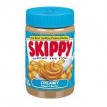
Do this with the tongue only (no fingers) after a glob of it has been placed on the roof of the mouth or behind the top of the front teeth. This works on tongue elevation / lifting. If you put it over the in one cheek, it works to help lateralize the tongue.
Cheerios of Apple Jacks
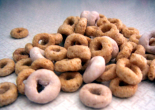
Put on the table and have the child spear with one tongue. No hands or lips can be used. The child has to lern to aim and protrude the tongue past the lips.
Ice Cream

The child will lick the ice-cream as it drops down the side of the cone. The child cannot use their lips. The tongue only!
HORN BLOWING
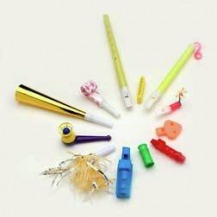
Working with horns facilitates increased muscle strength. While working with the child, the therapist should hold the horn perpendicular to the client’s mouth.
The Goals of Horn Blowing Therapy:
The Goals of Horn Blowing Therapy:
- Lip Closure
- Lip Rounding
- Drooling Control
- Lip Protrusion
- Tongue Retraction
- Open Mouth Sound
- Bilabial Sounds
- Airflow Control
References
Bonds, T.K. (n.d.). The Problem of Tongue Thrust. Retrieved from http://www.muleshoedental.com/AVQ/tongue%20thrust%20t.htm
Bowen, C. (2010). Oral Motor Therapy. Retrieved from http://members.tripod.com/caroline_bowen/oralmotortherapy.htm
Rasmussen, S. (2000). Oral Motor Exercises for Children 3+: Solving Eating Problems & Speech Production. Retrieved from http://www.suite101.com/article.cfm/speech_language_disorders/41710
Rosenfeld-Johnson, S. (2005). Apraxia/Dysarthria: Oral-Motor (Muscle-Based) Therapy Post CVA. Retrieved from http://www.txsha.org/Convention/pdf/Rosenfeld-Johnson,%20Sara-Apraxia.pdf
Speech Therapy on Video. (2006). Oral Motor Exercises to Try at Home. Retrieved from http://www.speech-therapy-on-video.com/oralmotor.html
